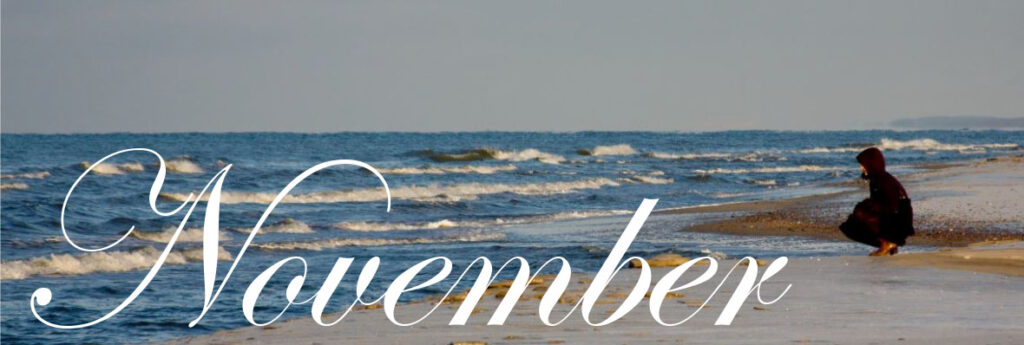From the exploits of Chris Columbus and Michelangelo to the tragic crash of a plane carrying a Brazilian soccer team, November has had its share of notable moments in travel history.
In 1492, Christopher Columbus noted in his journal the use of tobacco among the Indians. It was the first recorded reference to tobacco.
In 1512, Michelangelo’s paintings in the Sistine Chapel in Rome were first exhibited to the public. Across the ceiling he painted themes of the Bible, including representations of creation, man’s temptation and fall, as well as Noah and the flood.
In 1793, the Louvre Palace in Paris was opened as a public museum.
In 1807, the Lewis and Clark expedition sighted the Pacific Ocean at the mouth of the Columbia River.
In 1832, the first streetcars in North America, drawn by horses, began service in New York.
In 1836, three men from Britain flew 770 km from London to Germany in a balloon. The trip took 18 hours.
In 1856, the Grand Trunk Railway was opened from Quebec to Toronto.
In 1871, one of history’s greatest searches ended when American newsman Henry Morton Stanley found British explorer Dr. David Livingstone at Ujiji in central Africa. Stanley’s famous question, “Dr. Livingstone, I presume?” were the first words Livingstone had heard from a white man in five years.
In 1885, the last spike was driven at Craigellachie in BC’s Eagle Pass, completing the Canadian Pacific Railway’s transcontinental line. Donald Smith, a principal CPR shareholder, did the honours. Though the line – stretching from Montreal to Port Moody, BC – was expected to take 10 years to construct, it was completed in less than five.
In 1889, the Eiffel Tower opened in Paris.
In 1939, US President Roosevelt laid the cornerstone of the Jefferson Memorial in Washington, DC.
In 1941, the Rainbow Bridge linking Niagara Falls, Ont., and Niagara Falls, N.Y., opened.
In 1976, the first commercial flight landed at Mirabel International Airport.
In 1977 British and French Concorde airliners made their first flights with fare-paying passengers to New York.
In 1979, an Air New Zealand jetliner crashed into the side of a volcano in Antarctica. The plane, carrying 257 people, was on a scenic flight from Auckland to the Antarctic coast and back. All 257 people, including three Canadians, were killed.
In 1980, Moretta (Molly) Reilly, the first woman in Canada to get an airline transport pilot’s licence and member of the Canadian Aviation Hall of Fame, died in Edmonton at the age of 58. As a pilot with Peter Bawden Drilling Services in Calgary, she became the first to pilot a DC-3 in extensive periods of darkness, in extreme weather conditions, often without radio communication or navigation aids, in Canada’s north.
In 1981, the balloon “Double Eagle V,” carrying three Americans and a Japanese, landed about 160 km north of San Francisco after an 8,480-km journey from Japan. It was the first manned balloon crossing of the Pacific.
In 1985, Egyptian commandos stormed an Egyptair jetliner that was hijacked a day earlier shortly after takeoff from Athens and diverted to Valetta, Malta. Hijackers retaliated by throwing phosphorus grenades among the passengers, killing 60 of 98 people on board including passengers, crew and five hijackers.
In 1987, Prime Minister Brian Mulroney lit the 1988 Winter Olympic Games torch atop Signal Hill in St. John’s, Nfld. The torch was carried by 7,000 Canadians on its way to the Games in Calgary, arriving the following Feb. 13th.
In 1997, terrorists gunned down 58 tourists at the Hatshepsut Temple, one of Egypt’s archeological wonders. Two policemen and six gunmen were also killed in the shooting, bringing the total death toll to 68.
In 2001, 260 people were killed when an American Airlines Flight crashed just minutes after taking off from John F. Kennedy International Airport in New York.
In 2001, Air France and British Airways resumed Concorde trans-Atlantic service, about 15 months after the supersonic jets were grounded by a deadly crash near Paris. (It was retired in November 2003.)
In 2001, Canada 3000, the country’s second-largest airline, ceased operations and cancelled its flights citing a downturn in business after September 11.
In 2003, a British Airways Concorde flew into retirement, looping over the Atlantic and English Channel at its top speed of 2,170 km/h in what the airline said was the last flight for any of the elegant supersonic jets.
In 2007, the Canadian cruise ship “The Explorer” sank in the Antarctic after hitting an iceberg. All 154 passengers and crew were rescued by a passing ship.
In 2008, gunmen launched co-ordinated attacks with rifles and grenades on several popular tourist sites, a crowded train station and two luxury hotels (Taj Mahal and Oberoi) in India’s financial capital, Mumbai, killing at least 174 people, including two Canadians, and taking several hostages.
In 2011, NASA launched “Curiosity,” its six-wheeled, super-sized Mars rover. It went on an 8-1/2-month, 570 million-km journey to the red planet and landed safely on Aug. 5, 2012.
In 2016, a chartered plane carrying members of Brazil’s Chapecoense first division soccer team crashed into a Colombian mountainside near the Medellin airport, killing 71 people. Three soccer players, two crew members and a journalist survived. Aided by dramatic cockpit recordings, investigators determined the jet apparently ran out of fuel.

